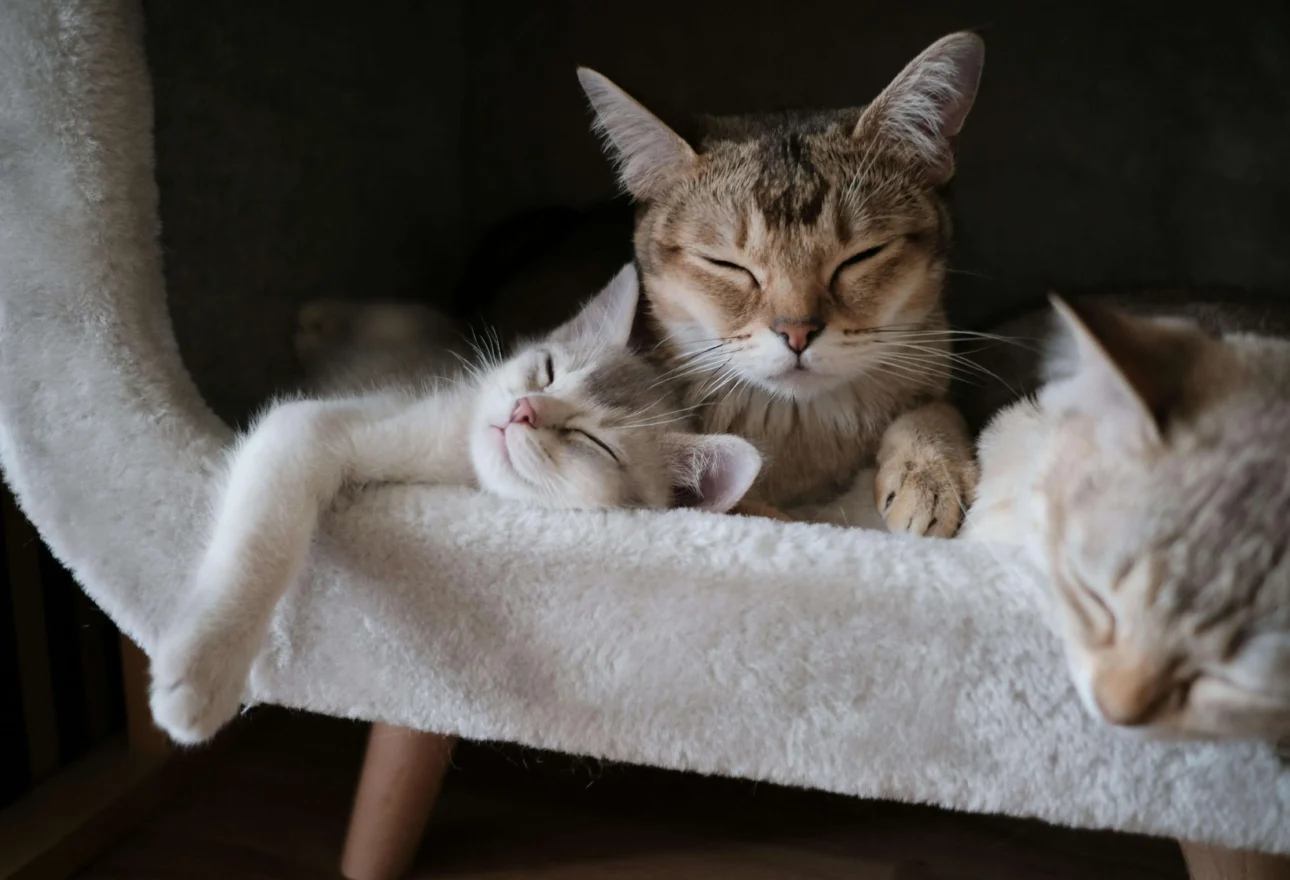If you’ve ever adopted a kitten, you may have found yourself wondering, “When do female cats stop growing?” It’s a common question for cat owners, especially those with young felines who seem to grow at an astonishing rate! The reality is, just like people, cats grow and develop at different rates, and there are several factors that influence their growth patterns. Understanding when your female cat will reach her full size can help you better prepare for her health needs, diet, and care during her growth phases.
In this article, we’ll dive into the growth stages of female cats, when they stop growing, and how to support their development. By the end, you’ll have a clear understanding of your cat’s growth process and how to ensure she stays healthy and happy as she matures. Let’s explore this feline journey together!
Table of Contents
- When Do Female Cats Stop Growing?
- Factors That Affect a Female Cat’s Growth
- Growth Stages of Female Cats
- How to Tell If Your Female Cat Is Still Growing
- How Can You Support Your Female Cat’s Growth?
- FAQs
- Conclusion
When Do Female Cats Stop Growing?
You might be surprised to learn that female cats generally stop growing a little earlier than males, but that doesn’t mean their growth is any less significant. The exact age when female cats stop growing depends on several factors, but most female cats reach their full adult size by around 12-18 months of age. That said, while they may have stopped growing in length and height by the time they’re about one year old, some cats can continue to fill out and gain muscle mass until they are about two years old.
Understanding this can help you gauge when your cat has fully matured, so you can better adjust her care as she transitions into adulthood.
Factors That Affect a Female Cat’s Growth
There’s no one-size-fits-all answer when it comes to growth, as several factors play a role in how your female cat develops. Let’s break down some of the key elements that influence her growth rate.
Breed
Just like people, some cat breeds grow faster and larger than others. Maine Coons and Ragdolls, for example, are known for their larger-than-life stature and can continue growing for up to 3-4 years! On the other hand, smaller breeds like Siamese and Bengals tend to reach their full size earlier—around 12 months.
Here’s a quick comparison of common breeds and their growth timelines:
| Breed | Growth Timeline | Average Adult Weight |
|---|---|---|
| Maine Coon | 3-4 years | 10-25 lbs |
| Ragdoll | 2-3 years | 10-20 lbs |
| Siamese | 12-18 months | 5-10 lbs |
| Bengal | 12-18 months | 8-15 lbs |
Nutrition
Nutrition plays a critical role in your cat’s growth. A balanced, high-quality diet with the right mix of protein, fats, and vitamins ensures your cat has the nutrients she needs to reach her full size. If she’s on a poor diet, it can stunt her growth, while overfeeding can lead to obesity, which can cause long-term health problems.
Tip: Always feed your female kitten food specifically formulated for kittens, as they have higher protein and calorie content to support their rapid growth.
Health and Genetics
Genetics are one of the biggest influences on how your cat grows. Cats with certain genetic predispositions may grow larger or smaller than average. Additionally, any health issues or medical conditions can affect growth. For instance, if a kitten is sick during a critical growth period, she might experience stunted growth.
It’s always a good idea to keep up with regular vet check-ups to ensure your cat is growing as expected and to address any health issues early.
Growth Stages of Female Cats
Every stage of a female cat’s growth is marked by unique milestones. Understanding these phases can help you monitor her development and make the right adjustments in her care. Let’s break down what happens during each stage.
Kittenhood (0-6 Months)
During the first six months, your female kitten will experience the most significant growth. By the time she reaches six months, she will likely have doubled in size and weight. At this stage, her bones are still developing, and she will be very active, exploring her surroundings and playing a lot. If you’ve adopted a kitten, this is the time for early socialization and bonding.
By 6 months, your female cat may weigh anywhere from 3 to 5 pounds, depending on her breed.
Adolescence (6-12 Months)
Between six and twelve months, your female cat will continue growing, but not as rapidly as in the first few months. This is also when sexual maturity sets in for most cats. If you haven’t already, this is the perfect time to spay your cat, which can prevent health issues and unwanted pregnancies.
While her growth slows down, she’ll still be packing on some muscle and gaining weight. By 12 months, she will likely be about 90-95% of her full size.
Young Adulthood (1-2 Years)
Your female cat’s physical growth slows down even more during her second year. She’ll likely reach her full height by 12 months but may still continue to gain weight and muscle until around 18-24 months. Her behavior will mature, and she’ll likely become less hyperactive, settling into a more routine, adult lifestyle.
At this point, she should weigh around her full adult weight.
Full Maturity (2-3 Years)
By the time your female cat is between two and three years old, she will be fully mature. Her body will have reached its final size, and her personality will be fully developed as well. While she may not grow any taller, she could still gain or lose weight depending on her diet and activity level.
By 3 years old, your female cat should have reached her peak health and size.
How to Tell If Your Female Cat Is Still Growing
Wondering if your female cat is still growing? Here are a few signs to look out for:
- Increased appetite: If she’s eating more than usual, it could be a sign she’s still growing.
- Muscle definition: Cats tend to gain more muscle as they mature, so if your cat’s muscles are becoming more defined, it could mean she’s still filling out.
- Changes in weight: If your cat continues to gain weight, especially after 12 months, it might indicate that she’s still developing.
How Can You Support Your Female Cat’s Growth?
Supporting your female cat’s growth goes beyond just feeding her—though proper nutrition is a key part! Here are a few tips to ensure she grows into a healthy adult:
- Feed a high-quality kitten food: Look for brands with real protein (like chicken or fish) as the first ingredient.
- Provide regular veterinary care: Regular check-ups will help catch any potential health issues early on.
- Keep her active: Playtime is crucial for muscle development and mental stimulation.
- Consider spaying: Spaying your female cat before she reaches sexual maturity (around 5-6 months) can prevent unwanted behaviors and health issues.
FAQs
How much should a female kitten weigh at 6 months?
At six months, a female kitten typically weighs between 3 to 5 pounds, depending on her breed and health.
Do female cats grow faster than male cats?
Female cats generally stop growing a bit earlier than males. Most female cats reach full size by 12-18 months, while male cats might take a little longer.
How can I tell if my cat is overweight?
If your cat has difficulty moving, has an overly round belly, or lacks muscle tone, it may be time to adjust her diet and activity level. Always consult a vet for a proper assessment.
Conclusion
Understanding when female cats stop growing can help you provide better care for your feline friend. From the rapid growth in kittenhood to the more gradual development during adolescence and adulthood, each stage of your cat’s life is special and important. By recognizing the growth phases and adjusting your care accordingly, you can ensure that your cat lives a happy, healthy life. Whether your cat is still growing or has already reached full maturity, keeping her well-fed, active, and monitored by a veterinarian will give her the best foundation for a long and fulfilling life.






